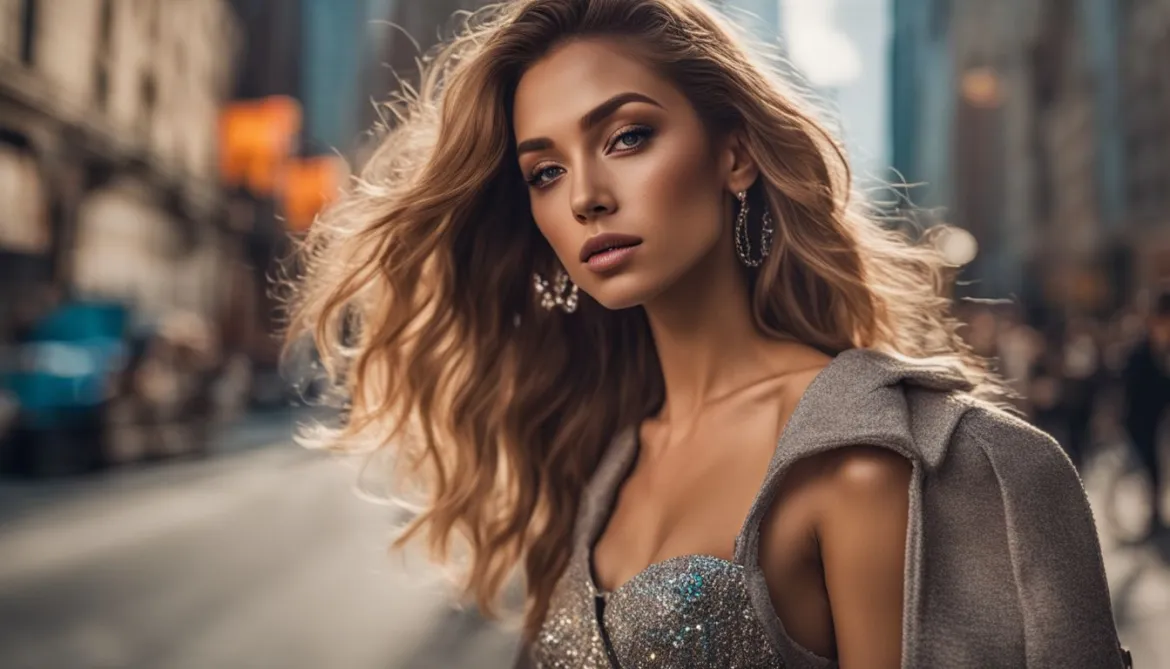Welcome to our guide on how to optimize your editorial images with post-processing. In today’s competitive photography industry, having visually stunning and professionally edited images is essential to attract image-buyers and stand out from the crowd. By implementing post-processing techniques, you can enhance the quality of your photos, save time, and ensure your images meet the highest standards of visual appeal.
At Our Image Editing Services, we understand the significance of post-processing in creating marketable editorial images. Whether it’s photo retouching, professional photo editing, or editorial photography editing, our team of experts is equipped with the skills and tools to enhance and transform your images into captivating visual assets.
Post-processing entails various techniques such as image enhancement, digital image editing, color correction, photo manipulation, and image optimization. Each of these techniques plays a crucial role in enhancing the visual impact of your images and ensuring they are ready to captivate your audience.
Key Takeaways
- Post-processing is essential in creating marketable editorial images.
- Implementing post-processing techniques can enhance image quality and save time.
- Image editing services provide expertise in photo retouching, professional editing, and more.
- Techniques such as image enhancement, color correction, and photo manipulation optimize images for maximum impact.
- Image optimization ensures your images are ready to captivate your audience.
Time-Saving Tips for Post-Processing
To streamline the editing process and maximize efficiency, we recommend implementing the following post-processing tips:
- Shoot in Manual Mode: By shooting in manual mode, you have full control over your camera settings. This results in better initial photos that require minimal editing later on.
- Utilize RAW Format: Shooting in RAW format instead of JPEG allows you to retain more image detail and provides greater flexibility during post-processing. RAW files capture more data, giving you more options for adjustments.
- Add Basic Keywords: Immediately upload and add basic keywords to your images for easy organization and quick retrieval. This saves valuable editing time and ensures efficient workflow.
- Correct Lens Imperfections: Use lens correction presets available in software like Adobe Lightroom to compensate for any lens imperfections. These presets automatically correct common issues and save you time on manual adjustments.
- Implement a Rating System: Establish a rating system to prioritize editing the best images first. This allows you to focus on the most marketable and impactful shots, optimizing your editing time.
The Benefits of Shooting in Manual Mode
Shooting in manual mode provides several advantages that contribute to a streamlined post-processing workflow. When you have full control over camera settings, you can achieve the desired exposure, focus, and depth of field. This reduces the need for extensive editing later on, saving you valuable time and effort.
Shooting in manual mode gives you creative control over your images right from the start. By setting the ISO, aperture, and shutter speed yourself, you can capture the scene exactly as you envision it, minimizing the need for extensive editing adjustments later on.
The tips mentioned above, combined with shooting in manual mode, will help you optimize your post-processing workflow, ensuring that you spend less time editing and more time capturing stunning images.
Post-Processing Techniques for Quality Enhancement
Achieving high-quality editorial images requires attention to detail during post-processing. By employing the right techniques, photographers can enhance their images and create visually stunning results. In this section, we will explore several post-processing techniques that can elevate the quality and impact of your editorial images.
Monitor Calibration for Accurate Edits
One essential step in post-processing is monitor calibration. Ensuring that your monitor displays colors accurately allows you to make precise edits to your images. Investing in a monitor calibration tool like SpyderX will save you time and enhance the overall quality of your editing process. With accurate colors, you can fine-tune your images to achieve the desired look and ensure consistency across different devices and media.
Maintaining Consistency for Cohesive Sets
Consistency is key when creating a series of editorial images. To achieve a cohesive look and feel, maintain consistent lighting, settings, and editing style throughout a photoshoot or session. This consistency will tie your images together and enhance their visual impact when presented as a set. By applying the same editing techniques across your images, you can achieve a professional and polished result.
Automating Repetitive Edits with Photoshop Actions and Lightroom Presets
Repetitive editing tasks can be time-consuming. To streamline your workflow, take advantage of Photoshop actions and Lightroom presets. These tools allow you to automate common edits, such as applying specific filters or adjusting color settings. By creating and using custom actions and presets, you can save time and maintain consistency in your editing process, ensuring that your images have a unified look and feel.
Fine-Tuning Highlights, Shadows, and Colors
Fine-tuning specific elements of your images can significantly enhance their visual impact. Pay attention to the highlights and shadows in your photos, adjusting them to achieve the desired balance. Additionally, color correction is crucial for creating captivating images. Experiment with color adjustments to achieve the desired mood or style. By fine-tuning these elements, you can make your images stand out and engage viewers.
Logo Removal for Commercial Image Licensing
When preparing editorial images for commercial licensing, it is essential to remove logos and trademarks. This ensures that your images comply with licensing requirements and do not infringe on intellectual property rights. Use appropriate tools and techniques to remove logos seamlessly, allowing your images to be used in a variety of editorial contexts.

The Impact of AI on Photography Editing
Artificial Intelligence (AI) has revolutionized the photography editing process. With AI tools, photographers can now experience a range of advanced features that streamline their workflow and enhance their creative adjustments. Let’s explore the different ways AI has transformed photography editing:
Auto-Selection
AI-powered auto-selection allows photographers to save time by automatically recognizing and selecting subjects in their photos. This feature eliminates the need for manual subject identification, enabling photographers to focus on fine-tuning their images.
Auto-Enhancement
AI tools analyze lighting conditions within a photo and suggest optimal settings for enhancement. By leveraging AI-driven auto-enhancement, photographers can achieve quick and efficient edits, preserving the natural beauty of their subjects.
Automation
Large catalogs of photos can be edited simultaneously with the help of AI automation. By automating basic adjustments, photographers can significantly reduce their editing time, allowing them to work more efficiently and produce consistent results.
Subject Manipulation
AI-assisted subject manipulation empowers photographers to easily edit specific elements within a photo, such as the sky or foreground. This capability provides photographers with greater creative control and enables them to produce stunning imagery.
Personalized Presets
AI tools can learn and adapt to photographers’ personal editing styles, creating personalized presets for efficient editing. This allows photographers to maintain their unique artistic vision while benefiting from the automation and consistency offered by AI-powered tools.
AI has ushered in a new era of photography editing by offering time-saving features, advanced automation, and unprecedented creative possibilities. With AI, photographers can optimize their workflow, produce high-quality images, and push the boundaries of their creativity.
| AI Photography Editing Benefits | Key Features |
|---|---|
| Time-saving | Auto-selection, auto-enhancement, automation |
| Greater creative control | Subject manipulation, personalized presets |
Finding the Balance Between AI and Creativity
While AI editing tools offer significant time-saving benefits, it is vital to strike a balance between using AI and maintaining personal creativity. Transparency about the use of AI in photography editing is important, especially for professionals and business owners. It is crucial to remember that AI tools are meant to assist, not replace, photographers’ skills and creativity. By gradually incorporating AI tools into our workflow and experimenting with various options and settings, we can navigate the exciting realm of AI editing while preserving our unique artistic vision.
Transparency: Embracing the Power of AI
We understand the potential of AI editing tools to revolutionize the way we work. These tools can significantly reduce the time spent on repetitive tasks, allowing us to focus more on the creative aspects of photography. However, it is essential to be transparent about our use of AI to maintain trust and authenticity. By openly acknowledging the role of AI in our editing process, we can foster a sense of transparency with our clients and build stronger professional relationships.
Maintaining Personal Creativity
As photographers, our personal creativity is our greatest asset. While AI can automate certain aspects of the editing process, it is our unique perspective and artistic vision that sets us apart. By preserving our personal touch in every image, we can create photographs that truly reflect our creative style and resonate with our audience. It’s important to remember that AI should be seen as a tool to enhance our creativity, not a replacement for it.
“Creativity is allowing yourself to make mistakes. Art is knowing which ones to keep.” – Scott Adams
Experimental Integration of AI Tools
Integrating AI tools into our workflow requires a gradual and experimental approach. Instead of relying solely on AI for all editing tasks, we can start by using it for specific areas where it excels, such as automated selection or simple enhancements. By exploring different options and settings, we can find the right balance between AI-assisted editing and our personal touch. It’s through experimentation that we discover new techniques and push the boundaries of our creativity.
Preserving Our Artistic Vision
Our artistic vision is what makes our photography unique. While AI tools can provide suggestions and automated adjustments, it is up to us to make the final decisions. We must evaluate the suggestions made by AI and assess whether they align with our creative intent. By actively shaping and refining the outputs of AI tools, we ensure that our photographs reflect our unique style and artistic vision.
Incorporating AI into our photography editing process is an exciting opportunity to streamline our workflow and unlock new possibilities. However, it’s essential to find the right balance between leveraging AI for its time-saving benefits while maintaining our personal creativity. By embracing transparency, experimenting with AI tools, and preserving our artistic vision, we can harness the power of AI to enhance our photography and provide our clients with exceptional and authentic visual experiences.
Conclusion
In summary, optimizing editorial images through post-processing techniques is essential for creating marketable and high-quality photographs that meet the demands of image-buyers. By following time-saving tips, utilizing post-processing tools, and embracing the capabilities of AI editing, photographers can optimize their workflow and achieve impressive results.
By incorporating post-processing techniques, photographers can enhance the visual impact of their images, save time, and maintain their artistic creativity. It is crucial to find a balance between using AI tools and preserving personal editing skills to create unique and compelling editorial images. While AI editing offers significant benefits in terms of time-saving and automation, it is important to remember that AI tools are meant to assist, not replace, photographers’ skills and creativity.
As technology continues to advance and AI capabilities evolve, photographers have the opportunity to explore and utilize new post-processing techniques to streamline their workflow and elevate their photography. By staying updated and incorporating these advancements into their creative process, photographers can optimize their workflow, produce outstanding images, and thrive in the dynamic world of editorial photography.
FAQ
Why is post-processing important for editorial images?
Post-processing is crucial for enhancing the quality of editorial images, making them more marketable and meeting the demands of image-buyers. It allows photographers to optimize their editing process and save time.
What are some time-saving tips for post-processing?
Shoot in manual mode, utilize the advantages of shooting in RAW format, upload and add basic keywords to images immediately for easy organization, use lens correction presets for compensating lens imperfections, and implement a rating system to prioritize editing the best images.
What post-processing techniques can enhance the quality of editorial images?
Monitor calibration ensures accurate edits, maintaining consistency in lighting, settings, and editing style is crucial, Photoshop actions and Lightroom presets automate repetitive edits and maintain consistency, fine-tuning elements like highlights, shadows, and colors enhances visual impact, and removing logos and trademarks is necessary for commercial image licensing.
How does AI impact photography editing?
AI tools offer features such as auto-selection, auto-enhancement, automation, and subject manipulation, which save time and make editing more efficient. AI can also learn and adapt to personal editing styles, creating personalized presets for photographers.
How can photographers find a balance between using AI and maintaining creativity?
It’s important to be transparent about the use of AI in photography editing and remember that AI tools are meant to assist, not replace, photographers’ skills and creativity. Gradually incorporating AI tools into the workflow and experimenting with various options and settings can help in finding the right balance.
How Can Post-Processing Improve the Quality of Editorial Images?
Post-processing is crucial for mastering image editing for publication. It allows for fine-tuning and enhances the overall quality of editorial images. Through adjustments in exposure, color, and sharpness, post-processing helps to create visually stunning images that are worthy of publication.




